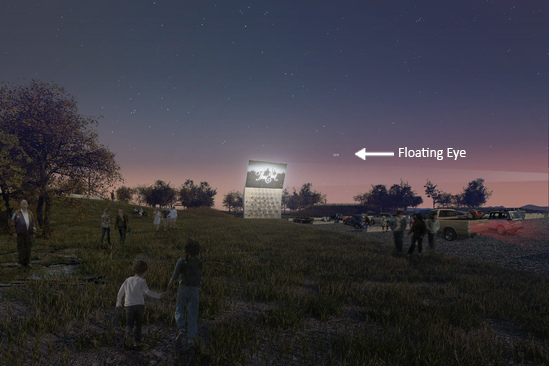
During a week notable for dramatic disclosures about the breadth of government surveillance, the Senate started debating the immigration reform bill. The two issues are more related than you’d think. The ACLU writes that the bill “creates the kind of militarized environment along our southern border that is extremely costly, harmful to border communities’ quality of life and enormously inefficient.” The bill calls for an increase of $4.5 billion over 5 years on border security, including surveillance drones — and that’s in addition to the $18 billion we already spend annually, more than on any other type of law enforcement.
Earlier this month, I visited some of these border communities in the high desert of southwest Texas. Border Patrol officers are present in large numbers in every town and crossroads, even some a two-hour drive from the actual border. Department of Homeland Security SUVs and hatchback pickup trucks trundle regularly over mountains and through the rocky desert. It’s nearly impossible in this area to go a day without seeing an officer.
Also present: drones. The bill calls for U.S. Customs and Border Protection to “operate unarmed unmanned aerial vehicles along the Southern border for 24 hours per day and for 7 days per week” — in other words, continual surveillance of the border by drones.
The drones are already there, though they aren’t continuously in the air; some are Predator B and Guardian drones — unarmed versions of the fighter jet-shaped aircraft commonly used in the Middle East. Also in the sky are large blimps loaded with high-tech cameras, on loan from the Justice Department — like the one I saw resting here outside of Valentine, Texas, roughly 20 miles from the border.

“The floating eye.” (Photo: John Light)
Called “the floating eye,” these building-sized balloons were formerly used to spot insurgents in Afghanistan. Now, they have become so common in the area that one was included in an artist’s rendering of a soon-to-be-built drive-in movie theater in Marfa, Texas, a half-hour drive southeast through the desert from Valentine.

Artists’ rendering of the Marfa Ballroom drive in move theater. (Image: MOS Architects)
In 2012, these drones reportedly helped the Border Patrol to apprehend 143 individuals “involved in illicit activities,” out of 365,000 total apprehensions, and to seize 66,000 pounds of narcotics. But the program is controversial. The Center for International Policy, a think tank, released a report arguing that these small victories weren’t worth the high price tag — the drones cost about $20 million each. In May 2012, the Department of Homeland Security’s own inspector general faulted Customs and Border Protection for purchasing drones without adequately planning how it would use them.
The Center for International Policy has also joined the Electronic Frontier Foundation (EFF) in calling these domestic drones a threat to civil liberties. In light of recent disclosures about the extent of the government’s coordinated data collection, the EFF is curious about what happens to data collected by domestic drones. The immigration bill “offers little protections or guidance on [domestic drones’] use and on the grave privacy implications they create,” EFF policy analyst Mark Jaycox told Mother Jones’ Gavin Aronson.
Still, some senators feel the $4.5 billion in the bill doesn’t go far enough — John Cornyn (R-Texas), the minority whip, is pushing an amendment that would deny a path to citizenship for undocumented immigrants until 100 percent of the border is under surveillance and 90 percent of those entering the country without papers are apprehended. His amendment also requires nationwide implementation of E-Verify, a government system for employers to determine if potential hires are eligible to work in the U.S. E-Verify logs information about private citizens regardless of immigration status, and, like drones, causes privacy concerns.
But as senators attempt to hack the legislation into a passable form over the next few weeks, the presence of drones seems to be a foregone conclusion. Some senators have shown some concern over the issue — Dianne Feinstein (D-Calif.) tried and failed to attach an amendment to the bill restricting drones to stay within 25 miles of the border. (She did, however, succeed in restrictingdrones to stay within three miles of the border in her home state.) But in Arizona, New Mexico and Texas, Customs and Border Protection will be allowed to use drones within 100 miles of the border — the current limitation. And Customs and Border Protection is seeking to award a $443.1 million contract to defense contractor General Atomics, an estimated $237 million of which would go toward 14 new drones. So whether or not an immigration bill gets passed with new funding to increase security efforts, those living on the border can expect more floating eyes in the sky.

